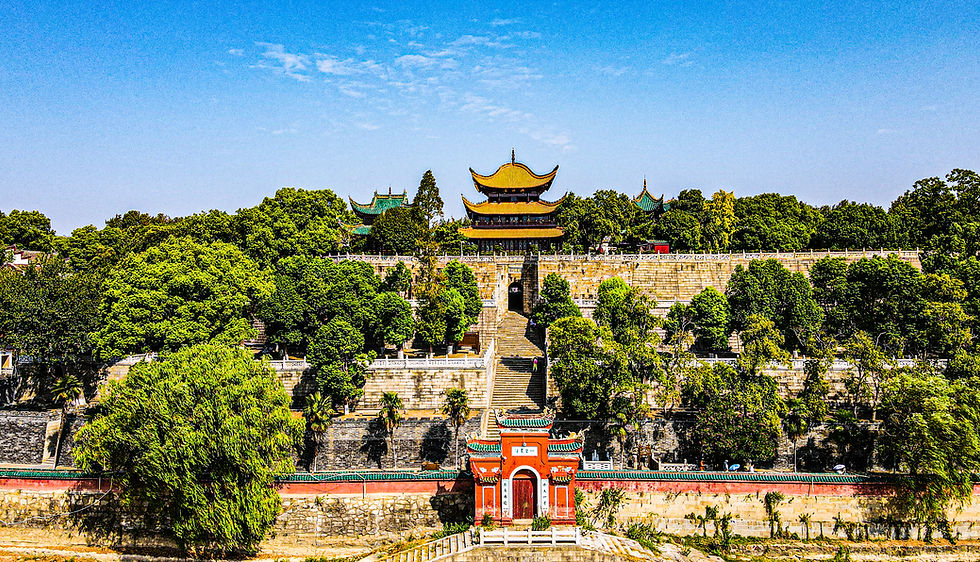Halal Food in Hunan
- y sq
- Aug 4
- 3 min read
Updated: Aug 5
Halal cuisine has long been an integral part of China’s diverse culinary landscape, shaped by centuries of cultural exchange along the Silk Road and the migration of Muslim communities across the country. From the bustling night markets of Xi’an to the mosques of Yunnan, halal food reflects both the depth of Islamic tradition and the richness of local flavors.
In Hunan, where bold and spicy dishes define the region’s culinary identity, halal dining offers a distinctive lens through which to experience the province. Local Muslim communities, primarily Hui, have woven their own traditions into Hunan’s fiery palate—creating dishes that are both authentic to their faith and expressive of the land’s character. Think hand‑pulled noodles with a hint of chili oil, fragrant lamb hotpot infused with local spices, or skewers grilled to perfection in lively street markets.
For travelers seeking halal options, Hunan offers a wide variety—from family‑run eateries near mosques to modern restaurants in Changsha’s vibrant food scene. Each meal is more than sustenance; it is a meeting point of culture, faith, and hospitality, revealing yet another facet of Hunan’s diversity.
At Meetxiang, we understand that food is both a matter of taste and of belonging. Our curated journeys ensure that every guest, regardless of dietary needs, can fully experience Hunan’s culinary richness—respectfully, authentically, and deliciously.
How do I identify halal restaurants in Hunan?
In China, halal certification is managed by recognized authorities to ensure compliance with Islamic dietary laws. Certified establishments are typically marked with a green logo bearing the Chinese characters “清真” (qīngzhēn), meaning “halal.” You’ll often find this symbol at restaurant entrances or on food packaging, giving reassurance that the food respects halal standards.
In Hunan, halal-certified restaurants may also display an official certificate inside, issued by local Islamic associations. If you are unsure, it is perfectly appropriate to ask staff to show their certification—reputable establishments are accustomed to such requests and happy to provide assurance. At Meetxiang, our guides are familiar with the local dining scene and can recommend trusted halal eateries, whether you are in the bustling heart of Changsha or exploring the quieter towns of western Hunan.
What are some recommended halal dishes to try in Hunan?
Hunan cuisine is famous for its bold, spicy flavors—but within this fiery culinary landscape, halal traditions offer their own distinctive interpretations. Here are a few highlights:
Spicy Stir‑Fried Beef or Lamb (清真牛羊肉小炒): Tender meat sautéed with chili, garlic, and seasonal vegetables, blending halal tradition with Hunan’s signature heat.
Smoked Tofu with Peppers (小炒豆干): A classic local favorite, rich in texture and flavor, naturally vegetarian and often available in halal restaurants.
Lamb Hotpot (清真羊肉火锅): A comforting dish where thin slices of lamb are simmered in broth, paired with Hunan’s fresh produce and chili dips.
Hand‑Pulled Noodles with Hunan Twist (清真拉面): Inspired by Hui Muslim traditions, these noodles are often served with local vegetables and chili oil for a distinct regional flavor.
Halal Claypot Dishes (砂锅菜): Slow‑cooked lamb or beef with potatoes, peppers, and spices, echoing both halal culinary heritage and Hunan’s love of earthy flavors.
What else should I know about halal dining in Hunan?
Halal options are widely available in Changsha and other major cities, but may be less common in remote mountain villages or smaller towns. If your journey takes you off the beaten path, Meetxiang will ensure your dining arrangements are thoughtfully planned—whether that means securing halal‑certified restaurants, arranging meals with trusted local families, or preparing fresh vegetarian alternatives.
For us, halal dining is not only about dietary needs, but also about respect, inclusion, and cultural understanding. Every meal is an opportunity to connect with Hunan’s diversity—its flavors, its communities, and its living traditions.



Comments